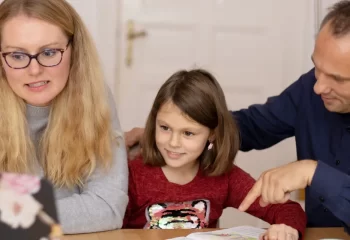This article is part of the Flexible Learning Guide. Learn all about Flexible Learning Environments, Flexibility in the Classroom, and Flexible Online Classes.
Take the lemons life gives you and make lemonade.
This is an excellent start to what flexible thinking refers to.
Life is all about flexibility and being able to manage any circumstance life gives you. Flexible thinking allows children of all ages and abilities to come up with solutions and ideas when a solution does not work out. More to say, it is what prepares them for life.
More than a great help to education, flexible thinking helps you accept all the others that do not think just like you. This social skill enables you to get along with others and be open to change.
Flexibility is how “we change our behaviour to different context or stimuli of the environment.”(Cognitive Flexibility)
Flexible thinking activities for High School students
At this age, students already have a certain degree of flexibility in their thinking. What teachers should do is develop and enrich it.
Some of the activities they can opt for is:
Mindfulness
When someone feels frustrated that something did not work out as expected, teach them to deal with their frustration by talking it out to themselves. This means students should have a conversation in their heads with themselves, see the situation as an outsider, and see what went wrong and the solutions – other than what they initially thought they should be. At this age, they should be open to taking this moment and sort out their frustration with themselves and not take it out on somebody else.
Play word games and tell jokes with students
Playing is how we learn from birth; thus, we will always embrace playing as a great way to learn. Playing word games shows students how many different meanings a word can have. It is a great way to relate to how flexible thinking works and why it helps you.
Logic games
Games such as Sudoku, Chess, Minesweeper are great to help students shift their thinking.
Flexible thinking activities for Middle School students
Middle school students always like being given new challenges and learning new things.
Start a book group
In a group book, students read the same books, share opinions, and discuss ways in which the outcome could have been different, in which the character could have acted differently. Sharing insights on a book allows students to see how many perspectives of a single thing can be and helps them see the benefits of flexible thinking.
School debates
Have debates on different subjects, argue about a side and then challenge the same student to change sides and present arguments about the other side.
Flexible thinking activities for Elementary students
There are moments when children just refuse to experience something out of their comfort zone, something new. This ranges from simple things like sitting on a different chair and with other classmates at a separate table. These are when parents and teachers should develop their cognitive flexibility mindset.
Breaking the rules
Most elementary students rely on rules. And so do people generally as a way of living. However, you must follow the rules until you reach the degree to which you can understand how and whether it is advisable to break the rule.
Elementary school students don’t feel comfortable when these rules are disrupted.
Breaking the rules is a great thinking activity for elementary school students. This means playing a simple game and, instead of following all the game rules, just change them. It helps them adjust their expectations and make room for change.
Embrace changes
Simple things like replacing your go-to red pencil for your whiteboard in the classroom with a black pencil will also show children that you are flexible.
Offer alternatives
In any play or class, make sure to have various alternatives. This will quickly show children that flexibility does not mean just another choice than the one they know; it means a wide variety of options from which they can choose. All of which will help them learn and experience new things.
Flexible thinking activities for preschoolers
Preschoolers have a way of sticking to what they know and find familiar. This allows them to be more relaxed and have a certain degree of safety. However, making them get out of their comfort zone from time to time can help them embrace change easier.
Mixed up schedule
Having a schedule is something that lets children know what to expect. However, no matter how hard you try, some things may push you to change the program. This is why preparing preschoolers to see that any schedule can be changed is necessary.
If you have a specific door you enter in the classroom, change it with another door. If you have a different set-up for children at tables at snack time, change it with smaller tables, with other children staying at a table. If you have a spot where you usually teach the lessons, change it and move into another spot – children will have to follow you from where you are.
Take them outdoors
Spending time outdoors is the favourite activity preschoolers have. More than just playing and having fun, their senses are stimulated, and their focus and attention are at their peak.
Getting creative
Toddlers are more creative than any adult can be. Their minds just find new ways to deal with things all the time. When there is a problem, ask them to brainstorm solutions to fix it, how many ways are there and which are those ways.
Stuck Thinking vs Flexible Thinking
More than this, they believe regulations should be followed thoroughly. Rigid or stuck thinking is inflexible thinking. Inflexible thinking is seeing only one way to solve a problem. It is hardly recommended as one way to solve a problem may not be the best.
Flexible thinking can help show you different solutions to a problem, and you can pick the best one. Stuck thinking only allows you to see a single solution. Flexible thinkers adjust their plans according to the situation, see different perspectives and embrace change.
| Stuck thinking | Flexible thinking |
| It is rigid and sees only one solution of a problem | Sees various solutions of a problem |
| Gets stuck | Is eager to accept changes |
Rock Thinking vs Flexible Thinking
Rock thinking is a type of thinking that gets upset when there are any changes happening, acts like a boss with people to get their ways, gets stuck with one way to solve a problem, and is not fun to be around with.
| Rock thinking | Flexible thinking |
| Gets upset when any change happens | Embraces changes |
| Bosses people around | Creates friendships and community |
| Sees only one solution | Has a view of various solutions and chooses the best one |
| Is not fun to be around | Has fun in any situation |
Flexible Thinking Tips
Flexibility has many positive outcomes in children and later in life in adults.
Some of the essential benefits of flexible thinking are:
- Improved reading abilities and understanding of the readings
- Better respond to any life events
- Increased ability to respond to stress later in life as an adult but also as a child
- Improved creativity
- To be able to embrace flexibility
- Be open to change
- Meet with various types of people that have different opinions and see that solutions to the same problem vary according to the person
- Be an active social person
- Enrol in a group
Conclusion
Life does not always go as planned. Having flexibility in thinking helps students grow into flexible and more accepting persons. If it is not an essential social skill, flexible thinking is undoubtedly a necessary social skill.
Some children suffer from different disorders that find it harder to have flexible thinking and cannot cope so well in various flexible thinking activities. Teachers should know who those students are and help them appropriately using medical practitioners.
Flexible Thinking Activities FAQ
What is flexible thinking?
Flexible thinking is that type of thinking that allows people to see a bigger picture of anything.
What are examples of flexible thinking?
- Open-minded to others’ opinions
- Open to change
- Seeing more than just one view of a situation
- Receive feedback positively
What are two ways to practice flexible thinking?
Playing games is a great way to practice flexible thinking. More than any changes are happening; it makes you come up with solutions.
Changing routines is a process that most people do not like because routine is in human nature. Being open to change will help you cope with your routine changes easier.
How do students develop flexibility skills?
Students can develop flexibility skills through social interaction. Being socially active will help them face a different situations, see different perspectives and choose the best solutions.




